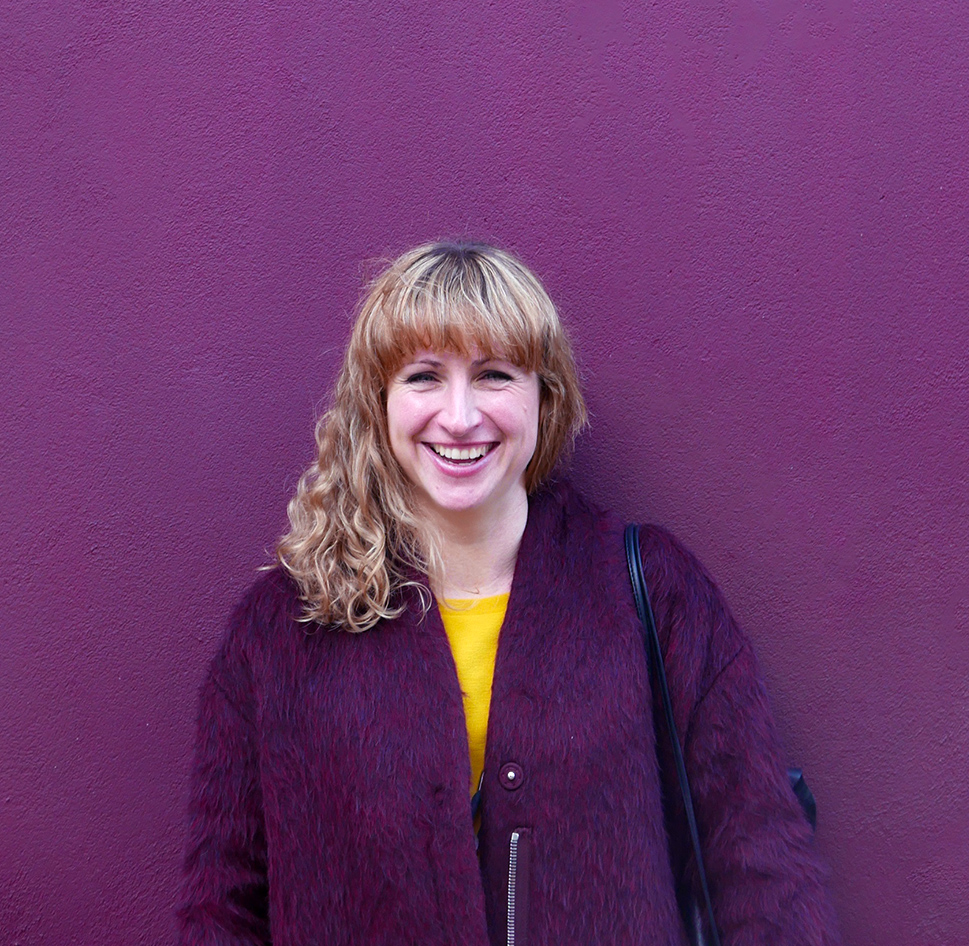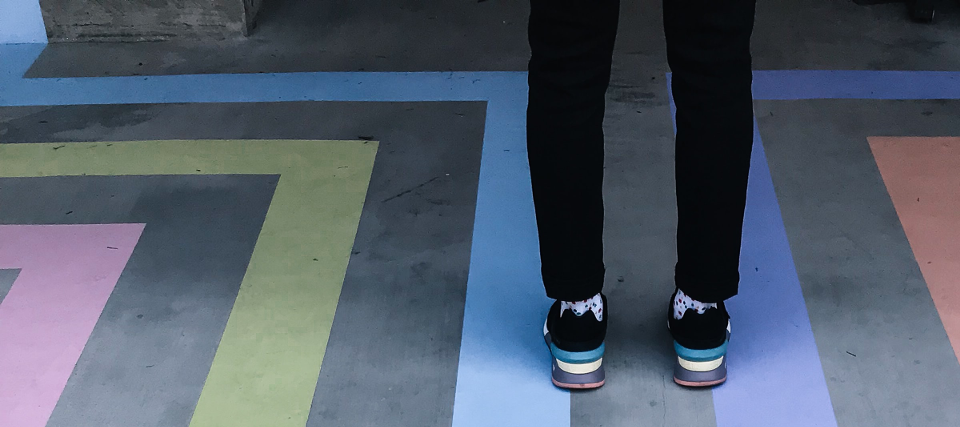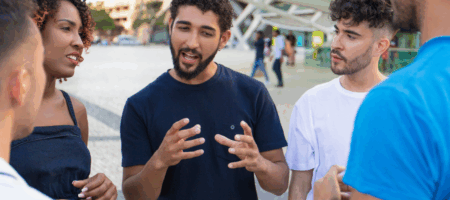In my last article, Foresight: where the future[S] meet your business plan, I outlined how intO’s Global Futures Roadmap helps our clients to mitigate the uncertainty of unfolding reality and make better decisions to stay one step ahead. The foundation of this programme is built on foresight; intelligence fuelled by research that identifies emerging attitudes and behaviours that are ahead of the mainstream curve. The role of this foresight is to indicate scenarios that are likely to be relevant to the future plans of our clients. Our roadmap process then takes this information and uses it to shape long-term strategy and clarify the immediate steps forward that should be taken.
The bridge between foresight & action
Turning foresight into action requires moving from divergent thinking (researching, brainstorming and theorising what is possible and what is known) to convergent thinking (where solutions are prioritised and agreed upon based on what is known, possible and probable). In the first instance this is less about solidifying concepts or solutions and more about identifying customer or market needs that are likely to impact our clients’ markets. The goal, however, is to get to a point whereby opportunities can be prioritised for development. There’s not a business in the world that has infinite resources to expend on innovation (don’t believe the press releases!), so a decent roadmap must work hard to balance a number of competing priorities with the key needs and competencies of the business.
Foresight will equate to nothing much unless the internal stakeholders within a business align their objectives and begin to move in the same direction. But stakeholders are human beings and a raft of different interests, ambitions, alliances, emotions, egos and beliefs will be at play within the organisation. That’s not a statement that should be read negatively; we all go to work with the intention of doing our very best, and what we think is ‘best’ will have been shaped by a variety of influences. A vital step of the early, divergent stage of the roadmap process, therefore, is about listening and understanding these differing stakeholder perspectives and objectives. But as we move into the convergent phase of the process, the goal is to expand each stakeholder’s mind with a raft of alternative future possibilities, and then facilitate a convergence of the cohort’s thinking so that an aligned plan can be agreed upon and taken forward.
The workshop
Stakeholder workshops are the cogs in the roadmap machine that turn thoughts into concepts that will transform into plans and action. The workshop will aim to gather diverse roles from across the business, and equally assorted personalities – often blending risk-loving rebels and innovators with detail-devout pragmatists and analysts. Workshop sessions are exhilarating, intense and often spread over just a few days in quick succession. The structure of a workshop usually depends on the methodology of the team running it. The intO Global Futures Roadmap, for example, follows a framework that we adapt to suit each client’s specific requirements. However, one absolute constant that we used to rely upon was the ability to gather all these different brains and perspectives into one room.
Physicality and the workshop
intO has proudly been a remote operation since its inception. The unique structure of our business – with team members spread across every continent of the world – necessitates it. But we still travelled about quite a bit, pre-pandemic. And if there was one element of the roadmapping process that always carried the salience to justify the air miles (that we’d never imagined we’d need to recreate 100% remotely), it was workshopping.
The setting and set-up of a workshop is vital. Traditionally, a workshop’s ability to produce alchemic outcomes has required a carefully selected physical space and a considered curation of tools and equipment. A workshop has to display and present all the intelligence that’s been delivered by the roadmap work thus far, and also capture the outputs of each workshop session (traditionally with whiteboards, vast sheets of paper, thousands of Post-it notes, video and audio recordings, photography, etc). A workshop environment needs to encourage both big-picture thinking and narrowed, tighter threads of focus. It must enable presentation and discussion with the group at large and also accommodate smaller break-out teams for close collaborative sprints. And it needs to be comfortable enough to spend a considerable number of hours in at-a-time. Workshop facilitators need to be brilliant multi-taskers, balancing the objectives of the sessions with the schedule at all times to ensure a productive outcome is delivered from the [high] investment of multiple stakeholder participants’ time. There’s a very fine line that needs to be walked between creative exploration and focused problem-solving and planning. Similarly, the comfort and confidence of the group – and of each individual within it – needs to be monitored and responded to. A workshop is a real orchestration of different minds, perspectives and personalities.
Being ‘in the room’ when you can’t be in one room
intO has run a number of workshops recently, because our Global Futures Research Programme is in high demand from clients who need to reassess their positions and plans as a result of covid-19, and push through the decision paralysis that the pandemic has afflicted on most businesses. We’ve had to very quickly translate the physical workshop experience into one that could be facilitated remotely – something that I would have felt was near impossible just a year ago. The tool we’ve been using, with great success, is Miro – a digital collaboration whiteboard, designed for distributed teams. I’ll be sharing our learnings with Miro during my forthcoming talk at the Distributed 2020 conference, 13th October (find out how to reserve your free place here), but in the meantime, here’s a summary of some of the key things we’ve learned:
Five top tips for digital workshopping
Prepare, prepare, prepare
The need to set absolutely everything up in advance is both a benefit and a disadvantage of remote workshopping. There’s far less flexibility to ‘go with the flow’ because online sessions typically need to be shorter and more structured and can cope with fewer glitches and introductions. If the participants are sufficiently diverse, you will have a real mix of people with varying levels of past exposure to the innovation process. All materials relating to the project so far, including background about the process and its objectives, need to be sent in advance. This helps to ensure that topline questions can be dealt with ahead of the session and that everyone approaches the workshop from a level starting point. It’s also far more important to have a proper run-through of the workshop to test its flow, logic and timings.
Assign a trouble-shooter
Even if you have a small cohort who all seem quite familiar with the technology you’re using (in our case, Miro), we’ve learnt that having an assigned trouble-shooter on the day is a real no-brainer. Technical glitches are always likely (affecting participants, facilitators – or both) and can really disrupt a session if the facilitator has to stop proceedings to sort them out. Some people will be reticent about putting their hand up, disrupting the flow or even admitting that they’re having technical problems if they’re asked (WIFI speed shame is a real thing!). Having a troubleshooter means that problems can be dealt with behind the scenes, without disrupting the session for everyone else on the platform, and without the need for those struggling to draw attention to themselves publicly. We share the WhatsApp details of an assigned troubleshooter and keep these details visible in every workshop frame.
Run a Miro meet-up in advance of formal sessions
Part of the importance of a trouble-shooter is down to the differing technical capabilities of participants. A platform like Miro is typically familiar to some and completely alien to many, particularly when we’re working with a diverse set of client stakeholders (many of whom will not work in innovation roles in their day-to-day). It helps to arrange an informal training session before the workshop to ensure that the workings of the platform will be inclusive for everyone. Uncertainty about the platform and its functions on the day will take up mental energy that should be focused on the tasks at hand. Try to make attendance of the training session mandatory, no matter how familiar each participant is with the platform, so that you’re not labelling beginners as novices (which might spark feelings of embarrassment for some). Present the session as a ‘meet-up’ to get to know one another. Design ice-breakers around the functionality that you need your participants to be confident in using and you’ll kill two birds with one stone.
Don’t forget to have fun!
A meet-up session will go some way toward helping people to bond together, but you really need to be cognizant of supporting interpersonal connection all the way through. Workshops are intense. Physical workshops always involve plenty of breakouts scheduled for informal chatting. This isn’t just to keep people caffeinated; how comfortable participants feel with each other will affect the quality of the group’s output. People need to be encouraged to support one another to share opinions, perspectives and ideas – whether working together in a physical or digital space. Build plenty of soft tasks into the agenda that stimulate conversation and establish connection. For example, we like to set some quick challenges that blend digital and physical environments and give people a deeper glimpse into one another, at the beginning of each session. For example:
- You have two minutes to locate and return with the largest item in your kitchen that you can carry
- Find a book written by an author with ‘Y’ in their name
- What item, within two feet of where you’re sitting, do you cherish most?
Make sure that the divide isn’t divisive
It’s not only important to foster an atmosphere where people feel comfortable in a group; you also need to ensure that they don’t feel isolated and divided from what’s going on. A clear benefit of digital workshops is that they are geographically accessible for far more people; it’s easier to fit a digital session into a day than it is to fly to Paris for a workshop series. However, don’t be blindsided by this benefit. In physical workshops, it’s much easier to gauge whether individuals are engaged with your content. Assessing body language and tone is instinctive for facilitators, who are adept at picking up on cues and dealing with issues quickly. In digital workshops, however, you need to work a little harder to mitigate any discomfort in advance. For example, as a business that works with global clients, participants and experts, English is commonly a secondary language for many of our workshop participants. We need to use language that can be understood by many people, and it’s often helpful to provide translations of any tricky words that can’t be avoided. It should also be acknowledged that some people will feel more comfortable speaking in a second language than writing, or vice versa. Likewise, not everyone will be au fait with every cultural reference.
This is an obvious point, but if people from multiple regions are attending the workshop, you need to be aware of different time zones. Degrees of access to technology, wifi speeds and other platforms will also vary in different countries (don’t provide a WhatsApp contact for your troubleshooter if you have participants in China, for example!). My parting advice for facilitators here is to work a little harder to get to know your individual participants, in advance of the workshop, than you would if the event was physical. A lot can be learnt about the potential challenges that individuals might be faced with if you arrange a zoom to introduce yourself and have a chat in person.
Success!
We believe that our remote workshops, hosted on Miro, are just as effective as the traditional, physical format – if not more so. For a start, the platform is inspiring and easy to use; even beginners are motivated and excited to get started. For the more introverted participants, the remote format is perhaps more inclusive compared to the physical environment that can often feel overwhelming. I get the sense that we’re offering an experience that’s more democratized because levels of engagement across all participants are more equal.
The remote experience is also so easily customised – both in terms of methods and aesthetics – to each objective or client because physical space limitations are removed. For intO, not having to hire the perfect workshop venue (often in a different city) puts more control back into our hands. We can prep each workshop end-to-end in advance and instead of spending time (and money!) on administration, travel and logistics, we can focus squarely on designing the very best experience for the participants. Similarly, budget is not swallowed up by travel, so we can invite more stakeholders and experts to take part. And they’re more able to fit a series of sessions into their schedules as they’re not required to travel and block out days of their time.
Finally, for me, the fact that the outputs of the workshop are captured all in one place, as you work, is a game-changer. Frantically taping Post-it notes and sketches onto poster-sized sheets of paper before you’re kicked out of a hired space and have to dash to make your plane home used to be my least favourite part of the process (particularly as the task of curating it all back into order the next day always lay ahead). Now, we have a space that all participants can access and review after the event. I’ve been trying to think about themes and stimuli that might necessitate physical workshops again in the future, but honestly, I can’t think of a single requirement that we couldn’t navigate around.
Do you have questions about foresight and design research? Would you like to learn more about how intO’s Global Futures Roadmap programme might help your brand, business or department? Our friendly, super-smart Strategy Director, Onika Simon, welcomes you to book a phone / video call directly into her diary HERE.
 Chloe is intO’s Research Director. Learn more about Chloe here and connect with her on LinkedIn, here.
Chloe is intO’s Research Director. Learn more about Chloe here and connect with her on LinkedIn, here.
Lead photo by Charles Etoroma on Unsplash
Posted on October 12th, 2020
Strategy Business Uncategorized Publications Innovation Research


 Chloe is intO’s Research Director. Learn more about Chloe
Chloe is intO’s Research Director. Learn more about Chloe 
